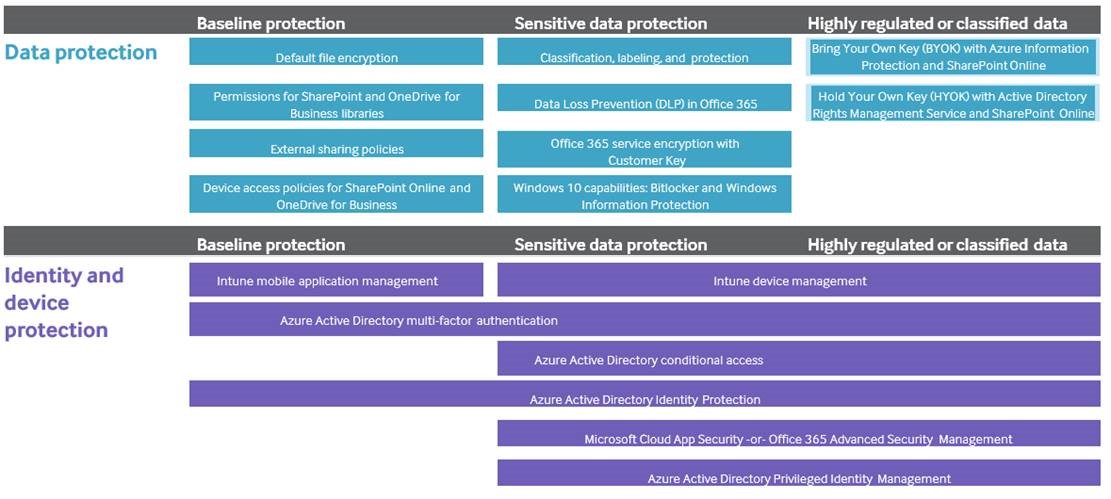- Articles
- 7 crucial steps to leverage Office 365's buil...
Table of Contents
Office 365 plans come with a ton (just about) of built-in security features which is fantastic…as long as you’re actually configuring and using them. And, if you’re in a highly regulated industry, you can tack on some extras to make your organization’s data even more secure. Here, we outline 7 steps to help you get started.
Step 1: Get to know the built-in and add-on security features of Office 365
Get familiar with the features: Azure Active Directory, SharePoint permissions, external sharing, multi-factor authorization, data loss prevention, Intune, BitLocker, encryption, Windows Defender, retention policies, eDiscovery, and audit logs.
“That’s a lot of stuff to know. Even if you don’t learn about any of the aforementioned, then please:
- Disable inactive identities to reduce both your licensing costs and your surface attack area.
- Configure Azure Active Directory Multi-factor authentication. Hands down this is a better idea than forcing password resets every 90 days. Employees make better password complexity choices when they can stick to a single password.”
Configure Azure Active Directory Multi-factor authentication. Hands down this is a better idea than forcing password resets every 90 days. Employees make better password complexity choices when they can stick to a single password.
Step 2: Get an assessment on the Secure Store, if you missed our previous blog about this, click here
Step 3: Start your data protection plan – map what can get by with baseline protection versus highly sensitive or regulated data. Figure out where your data lives, how sensitive it is, and how best to protect it. Learn about labeling your data here.

Step 4: Using the same three levels shown above, Plan for identity and device protection. Too many password changes and BYOD can spell trouble for any organization.
Step 5: Make use of your Office 365 Security & Compliance Center (you must be a Global Admin for that link, learn more here)
Step 6: Consider starting with Microsoft’s recommended configurations to protect your organization.
Step 7: Join us for the final installment of this series at our live webinar on Thursday, November 16th at 9am. We’ll walk you through some ways to help keep your data secure in Office 365!
